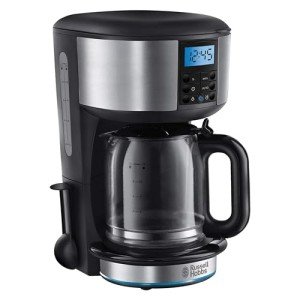Fixing a Drip Coffee Maker
If water is leaking out of the safety valve it's time to address the leak. The good news is that it's probably fixable.
We will also explore how to maintain the coffee maker and also learn various ways to make fantastic coffee with a drip coffee machine.
1. Carafe Leaks

Pouring hot water over the ground coffee beans and allowing it to slowly soak while storing the coffee in vessels such as a carafe. The coffee can be brewed using various methods and equipment. The most common methods are pour-over, French drip, and automatic drip.
Making a drip coffee maker can be an ideal way to get your morning caffeine fix without having to wait for a cup of joe at a cafe or for it to brew in the office. The ease of these machines can be a problem if they malfunction. One of the most frequent problems is that the coffee pot will drip when you pour. This can be a problem and make your coffee messy, but it could also cause burns to your hands or other surfaces.
The reason the coffee maker may leak when you attempt to pour is because of the way it is set. Typically the spout is located on the back of the carafe, near the reservoir of water. This is because there isn't enough room in the front of the container to accommodate a deep, easy-to-pour spout.
When it comes to liquids, they will flow where there is less pressure. Some older drip coffee makers drip if you try to pour.
This issue can be fixed easily. filter coffee maker uk can fix this problem by moving the spout toward the front of the carafe. This will resolve your dribbling problem and also save you the hassle of cleaning your counters every morning.
Another factor that could be causing the dribbling could be the amount of coffee you put into the carafe. Two tablespoons of coffee per six ounces of water is the recommended ratio. The ratio may have to be adjusted depending on the density of the ground changes. A kitchen scale is an effective tool to monitor the ratios between coffee and water and prevent over- or under-extraction.
2. Spout Leaks
If you have had the pleasure of looking at cheap drip coffee machines, you'll know that they are available in many different shapes and sizes. Some come with thermal carafes, while others don't. Some dispense the water through tight spout rings while others use larger ones.
The valve on the end of the hose can influence the way that the machines disperse water. The valve could become blocked by gunk and cause spout leaks. It's not difficult to fix. Unplug the pot and drain the water into the sink. Take the valve off and clean it.
3. Safety Valve Leaks
Bialetti pots are designed to function flawlessly, whether you're lying in bed or running towards the kitchen to turn the magic switch. However, if that sounding gurgling or promising rumbling does not occur, it could be time to check out the cause of the issue.
There's a gap in the bottom of the bucket, and a tube that goes to it. During the boiling process, this tube is used to carry the water to the drip area. There's a valve that is one-way in this tube which lets cold water flow back down into the bucket, while forcing the boiling water bubbles into the coffee maker.
If you're noticing pressure or steam being continuously released from your coffee maker through the safety valve there's a good chance that it's blocked and requires repair or replacement. Place a bucket underneath the safety valve pipe and then press the lever up several times. (Use gloves as the water is hot). If this does not work, it may be the right time to consult an expert. This is a long-term job and the valve needs to be removed and disassembled.
4. Filter Leaks
The reservoir and filter are at the central components of any drip coffee maker. The reservoir and filter are the core of every drip coffee maker. During the process of brewing it is essential to adhere to the proper water usage guidelines along with maintenance and cleaning routines. This will ensure that your coffee maker continues to perform at its peak.
When you switch on the coffee maker, water in the reservoir will be heated by the heating element that is resistive. The heat will rise through the white tube that is situated below the reservoir base. The hot water is poured over the grounds of the coffee and starts to soak them up and extract their flavors. When the hot water is poured over the coffee grounds and the coffee oils released during roasting are picked up. These oils give coffee it's distinctive flavor and aroma.
Coffee grounds that are left wet for too long could cause mold growth. To prevent this from happening, it is recommended to store the wet grounds in a way that allows them to dry more quickly (e.g. hanging, separate from the coffee maker or propped up to allow air flow and so on. ).
If the coffee grounds used aren't coarse enough, or the wrong size for your drip coffee maker they could block the water flow or result in an overflow. Therefore, it is recommended to use one filter made of paper or reusable that is the proper size for your drip coffee maker. It is also a good idea to experiment with the brew duration to find out what setting will give you the best flavor.
Regular cleaning and decaling are also necessary for optimal performance. To remove mineral buildup, follow the manufacturer's instructions on how to clean and decal your machine. Also, try using filtered or bottled water instead of tap water since it will result in better tasting coffee.
